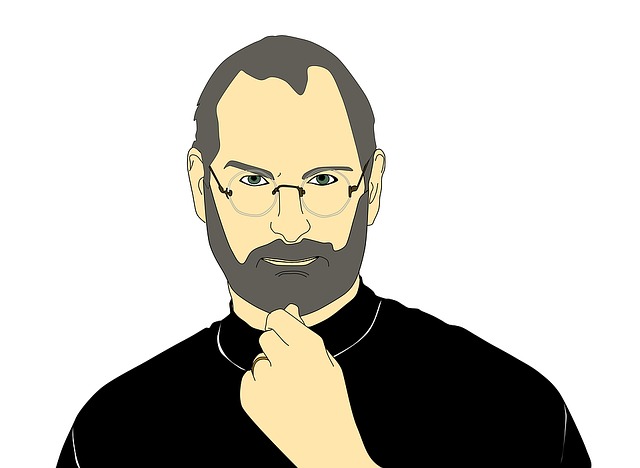In this article, we are going to examine how Apple's marketing strategy helped them become a market leader in the world of technology.
Apple's marketing strategy sits on a foundation of simplicity, both in terms of the products they deliver and getting them out there. Through this, they've created and sold products customers have come to love with unfettered loyalty.
Let's dig a bit deeper into at Apple's marketing strategy, and how we at Profitworks can help your business grow.
An Inside Look at Apple's Marketing Strategy: How They Became The Market Leader
Brief History of the Company
According to the Library of Congress Business Research Services, "Apple Computers, Inc. was founded on April 1, 1976, by college dropouts Steve Jobs and Steve Wozniak, who brought to the new company a vision of changing the way people viewed computers. Jobs and Wozniak wanted to make computers small enough for people to have them in their homes or offices. Simply put, they wanted a computer that was user-friendly."

This logo has become the apple of many an eye.
By August, 2018, Apple had become the first publicly traded company to reach a value of $1 Trillion.
Here's a look at some milestones along that journey, via The Financial Post.
- June 1977: The Apple II computer is released.
- January 1984: Jobs unveils the Macintosh, the first mass-market personal computer to feature a mouse and a graphical interface on the display screen.
- August 1993: Apple releases the Newton, a touch-screen device that was supposed to work like a digital notepad.
- May 1998: Jobs unveils a new line of personal computers called the iMac.
- May 2001: Apple opens its first retail stores in Virginia and California.
- October 2001: Jobs unveils a digital music player called the iPod.
- April 2003: Jobs unveils iTunes, a digital music store that initially only could be accessed on Apple devices.
- January 2007: Jobs unveils the iPhone.
- March 2008: Jobs announces an app store for the iPhone.
- January 2010: Jobs unveils a tablet computer called the iPad.
- October 2011: Jobs passes away.
- September 2014: Apple announces the Apple Watch, its first new product since Jobs’ death.
- March 2015: Apple becomes one of the 30 companies comprising the Dow Jones Industrial Average.
- June 2015: Apple launches its music-streaming service.
- June 2017: Apple announces its first internet-connected speaker, the HomePod.
- September 2017: Apple unveils its first $1,000 phone, the iPhone X, in celebration of the product line’s 10th anniversary.
While Apple has experienced internal strife and power struggles along the way, the brand has always been defined first and foremost by their exceptional and innovative line of products that have been embraced by hundreds of millions worldwide.

Steve Jobs helped set Apple apart as the market leader.
Apple's Marketing Strategy - Become a Purple Cow
Apple's marketing strategy can best be described by referring to Purple Cow, a book by Seth Godin that argues traditional marketing efforts are less effective today because of clutter and advertising avoidance. Companies should focus rather on creating remarkable products and target people who are likely to spread the word. Kind of like you would if you saw a purple cow standing in a field of regular ones.

Apple has created one of the most powerful brands in the world by focusing on quality, mastering their target markets and being unapologetic about the things the company stands for.
How Apple Stands Out From the Crowd
Focus on Unique Value Proposition
Apple creates products people want, and they will pay a premium to get them.
As Neil Patel puts it, "Apple focuses on their UVP (unique value proposition), which is beautiful design that works right out of the box with ever-smaller packaging. It’s a marketing strategy that gets juice throughout social media and is very much a competitive advantage for Apple and its market share. And the cost? Well, let’s just say Apple is absolutely not competing on price! In fact, you’ll almost certainly pay more – sometimes a lot more – for an Apple product than you would for a competitor’s version of the same product."
Apple's marketing strategy has been to set itself up as the luxury vehicle of technology products, creating retail stores that look like showrooms.

Apple customers are more than happy to pay a premium because they know they’ll get their money’s worth ... and it looks cool to do so.
Build a Loyal Community of Users
Over the years, Apple has built a fiercely loyal consumer base, with many lining up for days in order to be one of the first to get their hands on a new device. You don't often see that kind of consumer commitment with other brands.
Again, according to Neil Patel, "Apple has created a brand personality and culture that’s cool, fun, and friendly — the opposite of some of its competitors. Apple’s marketing strategies include making customers want to belong to that community. Their market share shows just how successful they have been."
Patel outlines a few steps to reach that level:
-
Create a vivid and accurate picture of your brand - core message, deeply-held values, personality, what it stands for above all else.
-
Make sure that your pages, marketing copy and content all express those values and that personality. Every aspect of your website should be consistent with those words you chose to describe your brand, from graphics to fonts to colour scheme.
-
Show your customers you value them, as well as their opinions. Let them know that you’re deeply interested in them with your content.
Keep it Simple
Apple's focus on simplicity begins with their products and extends to their marketing efforts.
Apple devices are sleek and minimal, with simple and clean colour schemes. Even the names are short and easy to remember - iPad, iPhone, MacBook, etc.
Along those same lines, Apple's marketing strategy includes keeping their web and sales content simple as well. In that respect, it's quite easy to replicate for even the smallest of businesses.
Even Apple's famous product launches have been simple in presentation - many featuring Steve Jobs, on stage alone wearing his trademark black turtleneck.
"Start by making sure your website and blog have scannable content. Research shows that only 16% of website visitors read every word on a page. The vast majority of users – 79% of web users, in fact – simply scan the page. This is imperative in understanding your content marketing and potentially using social media with smaller bits of digestible date." (Source: Neil Patel)
While Apple's marketing strategy has led to unparalleled success, small business owners would do well to learn from their model. More specifically, focus on creating a great product that people will value, and keep things simple.
We can help get you started with our free marketing plan template!

Sometimes less is more, and Apple is an amazing example of that truth.

Become The Leader In Your Market
"Our overall sales to new customers has improved as a result of detailed analysis, proposed solutions, and successful execution.”
Tom - Business Owner & Customer

